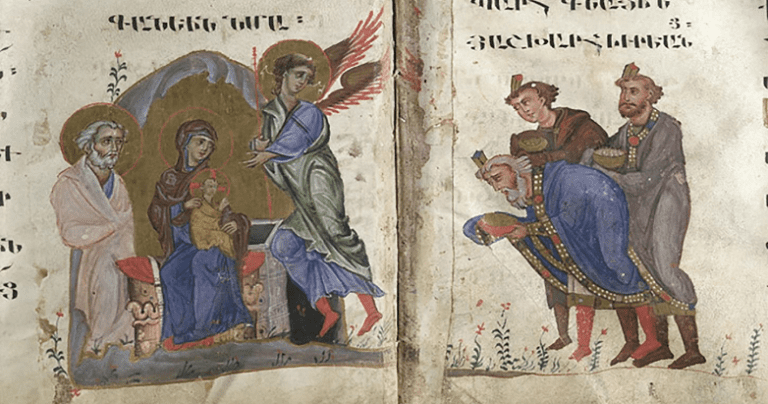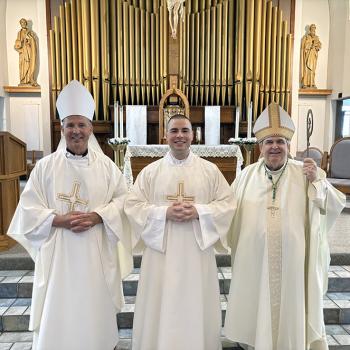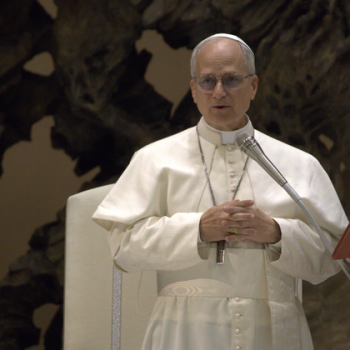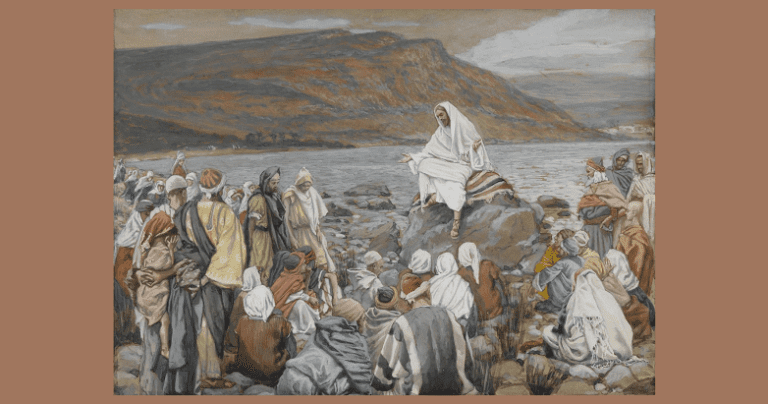Epiphany means great revealing, great show or great showing.

The Gospel reading at Mass on the solemnity
of the Epiphany of the Lord is Matthew 2:1-12.
Next Sunday is the feast of the Baptism of the Lord, the official last day of the Church’s liturgical Christmas season.
Today, the solemnity of Epiphany Sunday, the weekdays after it, and the following Sunday of the Lord’s Baptism are all Epiphany days within the season of Christmas.
The word “Epiphany” means literally “great revelation” or “great showing.”
Altogether the Epiphany days show greatly the nature and identity of the Child born in Bethlehem.
The Epiphany days show his work, his mission, his purpose in the world.
In the Gospel for Epiphany Sunday, we see pagan starwatchers, “magi,” arrive in Bethlehem from some far country east of Israel.
These “wise men” throw themselves on the ground to worship the Child.
They offer him gifts that suggest what future has now been born in this Child who sleeps in a manger.
- Bitter and intoxicating myrrh-spice of prophetic ecstasy.
- Sweet frankincense of priestly sacrifice.
- Gleaming gold of kingly wealth and glory.
With these three gifts, the Magi are paying homage to Him who is a prophet, a priest and a king.
The Gospel at Mass on the Epiphany weekdays are other great showings of the power, mystery and glory of this Child born of Mary.
In two of the Epiphany week Gospels, we see him healing all those suffering disease and pain, the possessed, the lunatics and the paralyzed.
In another Epiphany week Gospel, he turns five loaves of bread and two fish into enough to feed more than five thousand persons.
Yet another Epiphany week Gospel shows him to us in the darkest hours before dawn, as he walks upon the waters of a storm-tossed lake, steps into the boat of his terrified disciples, and causes the storm to die away.
The forces of nature fall down in obedience to the Child born of Mary.
Another Epiphany week Gospel shows him in his home town daring to claim the fulfillment of the messianic prophecy that begins with the words, “The spirit of the Lord is upon me; therefore, he has anointed me.”
Later in Epiphany week, John the Baptist comes forward in the Gospel to testify that the epiphanies are complete.
He speaks for the last time in the Gospel, saying, “That is my joy, and it is complete.”
All of Epiphany week and the Lord’s Baptism show greatly the Good News that the Christ Child has divine power and divine glory.
A Messiah of power, glory and divinity naturally draws us to join the magi in bowing down and worshiping him.
However, another kind of epiphany awaits us, that of Holy Week: an epiphany, a great show, not of divine power and glory, but of human weakness, suffering, humiliation and death.
Beyond his cross there is a further epiphany in his Resurrection.
The Resurrection Epiphany is one of divine power, glory and life.
Nonetheless, most of his own contemporaries saw his tortured agony and death as an epiphany that finally proved Jesus was not the Messiah.
The paradox of a divine Messiah who shows himself not only in power and glory, but also in humiliation and death is also the paradox of Christmas: that the Child born of Mary is both God and man.
Next Sunday’s feast of the Lord’s Baptism continues the paradox.
The sinless Christ submits himself to the baptism of repentance preached by John.
In the context of that submission, another epiphany takes place.
The Divine Spirit shows itself in the descent of a dove above the head of the Anointed One.
Finally, a fatherly voice from heaven confirms everything we celebrate in Christmas and Epiphany:
This is my beloved Son in whom I am well pleased. [Matthew 3:17]
Of that, we are witnesses God has commissioned in the sacraments of our faith in Christ.
We are witnesses of all that the Gospel shows us.
So, we now flock to Christ at his altar.
We are members of the Church, a collective bride going to meet Christ the groom.
We flock to offer him not only gold, incense and myrrh, but to offer him ourselves.
We go to have him complete us, but also to offer our own sufferings together with his.
We flock to offer him our humanity, but also to receive a share in his divinity.
In his Eucharistic Flesh and Blood, he takes our sin-guilt upon himself.
Thus he gives himself to us in the new and eternal covenant for the forgiveness of sins.
He thereby gives us his own innocence to eat and drink.
In freely choosing to take, eat and drink his Eucharist, we choose to be his epiphany.
So, we must show him to the world in the lives we choose to live. This he tells us, “Do this in memory of me.”
With John the Baptist, we decrease so that the epiphany, the great showing, of Christ might increase in us and throughout the world.
Go in peace, glorifying the Lord by your life.
Amen. Let us show him to the world.
Dear Readers of “Turn. Love. Repeat.”
California where I reside had a new law go into effect on January 1. California Assembly Bill 5 forbids freelance writers, editors and photographers from providing more than 35 content submissions to a media organization per year unless the organization hires the freelancer as a salaried employee. Patheos is a media organization, and I am a freelancer. So now I must limit my posts to 35 per year, or 1 post about every 10 days. So as not to exceed my limit here at Patheos, I will post my “extra” pieces at my own blog, Monk Notes.















